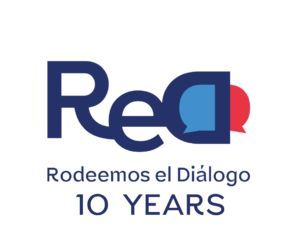Snapshot 15
Reincorporating Vulnerable Populations: The Importance of a Differential Approach
A Vulnerable Population
One challenge for reincorporation in Colombia is the acknowledgement of the different needs of FARC ex-combatants (or peace signatories, as former members of this guerrilla refer to themselves). This is particularly relevant for those with disabilities as a result of war, the elderly and those with chronic diseases who, although face the same difficulties as others in the reincorporation process, face additional barriers inherent to their condition. This requires a differential approach to guarantee their rights and decent living conditions.
Embrace Dialogue interviewed four members of the National Committee of War Wounded, Elderly and High-Cost Diseases Ex-combatants (CONELAEC), in order to understand and shed light on the problems that affect this population. According to their legal representative, this population has been in “a legal fight to be able to continue existing” since the signing of the Final Agreement.
Main Challenges and Difficulties
Since its inception, CONELAEC has proposed the creation of a technical committee within the National Reincorporation Council (CNR) dedicated to people with disabilities, the elderly, and those with high-cost diseases, who represent approximately 25% of peace signatories located in 27 departments of the country. Even though CONELAEC representatives participate in a subcommittee of the CNR’s working group on health, they argue that the lack of a specific committee has made it difficult to effectively mainstream the differential focus across all aspects of reincorporation – socioeconomic, psychosocial, and political. To date, the CNR has only made concrete progress in its Capazcidades (Capacities) program in the field of health as this is the only strategic and operational line of work that has funding. These resources come from international cooperation rather than the national government.
But, CONELAEC representatives assert that their voice should not only be with respect to health as this one-dimensional vision fails to take account of other aspects of reincorporation such as housing and productivity. For example, most of this group do not live within the Territorial Training and Reincorporation Spaces (ETCR). According to CONELAEC, only around 300 people in this situation live in ETCRs because they do not have adequate facilities and infrastructure for their specific condition: “Someone in a wheelchair or blind cannot live in an ETCR, for this reason many have moved with their families; the only support that can sustain them.” Outside of the ETCRs, this vulnerable population experiences other challenges such as a lack of financial assistance and adequate medical care. Consequently, the responsibilities of accompaniment and care fall on family members, mainly women, increasing gender inequality.
They also face difficulties in obtaining employment or participating in productive projects, especially of a rural nature, which affects their long-term economic reincorporation. Like the rest of the peace signatories, this population has a monthly allowance that helps them survive, but this does not solve structural problems such as lack of access to credit for health, housing or education.
Regarding security, most of the people that CONELAEC represents are following their reincorporation process in areas such as Cauca, Norte de Santander, Chocó, Arauca, Bolívar, or Montes de María, where there is a strong presence of armed groups. To date, four people with disabilities have been assassinated and leaflets with threats are circulating in these regions that show the danger faced by all persons in the process of reincorporation.
A Differential Approach
To consider the reincorporation of people with disabilities, the elderly, and those high-cost diseases exclusively from the perspective of health – as has happened so far within the Capazcidades program due to insufficient resources – limits what should be a differential and multidimensional approach to this process. For CONELAEC, this is the main flaw as well as the lack of an exclusive committee for this issue in the CNR or the direct participation of its representatives in other technical committees of the entity.
Regarding the latter, a member of the Committee adds that disability from the perspective of the Capazcidades program represents “great challenges because it is not enough to be affiliated with the health system or to have private consultations. Allocation of wheelchairs, braces and prostheses are required which must not only be aesthetic, but also functional to allow us to work and have a better quality of life ”.
CONELAEC is committed to advocating for the interests and needs of the people it represents and thus contributing to peacebuilding. In addition, it calls on the State to provide security guarantees. “It would be terrible to die trying to make visible the problems of people with disabilities, high-cost diseases and the elderly, but I would not be able to live with my conscience if I didn’t do it,” says one representative.
CONELAEC emphasises the importance of Colombian civil society questioning the stigmatisation of those who laid down their arms and signed the Peace Agreement, and recognising the importance of a differential approach to reincorporation. The representatives ask the State and society: “to take us into account, to end this polarisation and to build with us a social fabric.”
Embrace Dialogue highlights here the work of CONELAEC and expresses solidarity and concern for the guarantee of the rights of its members in the process of reincorporation. We call for the implementation of a differential approach that guarantees access to health, housing and long-term economic stability and we invite institutions and civil society to prioritise the issues of vulnerable populations in the process of reincorporation.


